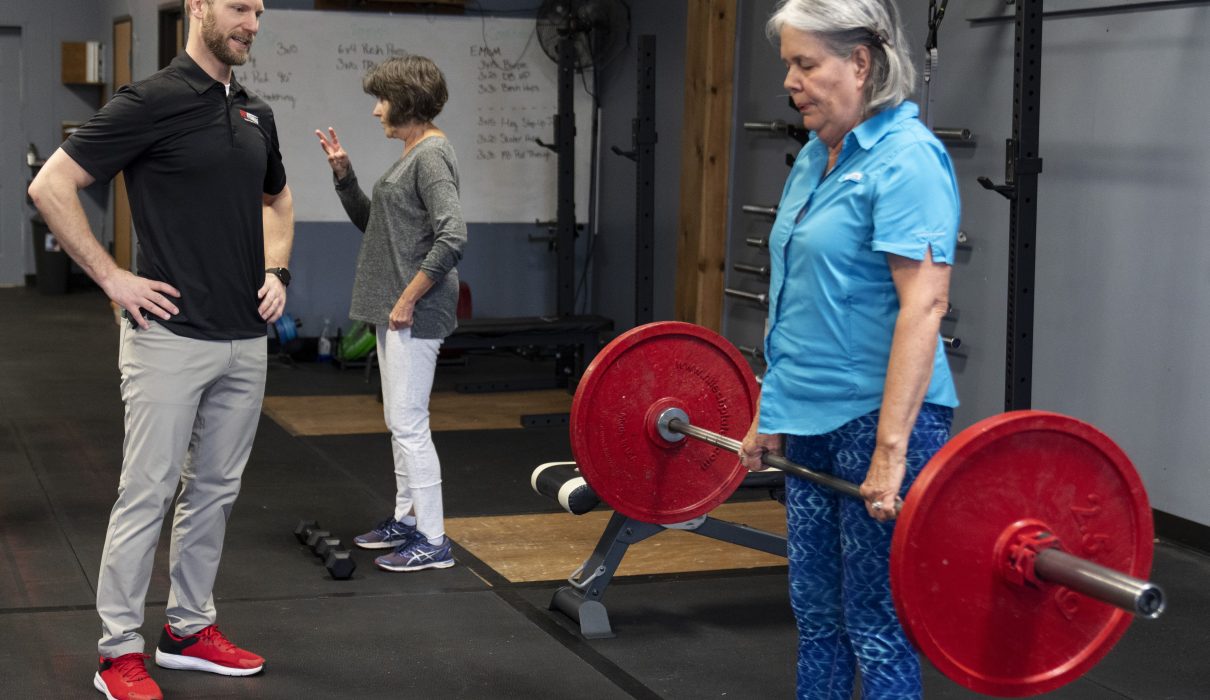Photo by L.G. Patterson
May is National OsteoporosisAwareness Month, which means this is a great time to discuss all things bone health. Are you familiar with the definition of osteoporosis? What about osteopenia?
Most folks know that these conditions have something to do with bone strength, but not everyone understands what this means for health and function.
According to the Bone Health and Osteoporosis Foundation, 54million Americans are affected by weak bones. Research suggests that as many as one in two women over the age of 50 will break a bone as a result of osteoporosis. Similarly, one in four men of the same age will break a bone. These breaks can seriously limit the ability to perform everyday. activities. Additionally, in about 20% of individuals with osteoporosis, a fracture can lead to death within a year.
To define osteoporosis, it helps to first under stand that bones are living organs.It may seem like bones are a solid mass, but they are actually a semi-hollow tissue. The inside of a bone looks a lot like a honeycomb structure.
Osteopenia is a condition where that mass inside the bone is low, but not low enough for bones to break easily. The more severe diagnosis is osteoporosis.This is a disease that is characterized by significant loss of bone mass and an increased risk of fractures. The wrist, spine and hip are especially vulnerable to breaks.
Whether diagnosed with osteopenia or osteoporosis, the first step is to create a treatment plan with your physician and health team. Treatments typically include a combination of medication, dietary changes and specific weight bearing and strength training exercises.
The best exercise programs for bone health include a focus on resistance training and balance exercises.Resistance training is beneficial because of how it directly increases bone density, but also because of what it does to strengthen muscles and joints. Muscle and joint strength are essential for healthy, functional movement. Strong bodies are far less susceptible to falls.
One thing to keep in mind is that while it is great to begin strength training of any kind, not all resistance programs are created equal. When it comes to strengthening bones, muscles and joints, heavier strength training is best. Stressing that honeycomb bone mass with heavy weights will cause the bones to start breaking down. This may sound like a bad thing, but when bones are loaded heavy enough, that breakdown stimulates growth. The appropriate amount of stress is what makes bones denser, stronger and less likely to break.
If you have osteoporosis, you maybe wondering what is the appropriate amount of stress? How do I load my bones enough to make them stronger without causing a fracture?
Safe and effective exercise programs involve gradually progressing weight over time. It is important to begin with higher reps and lower weight while making form and technique the focus.One of the best ways to avoid injury is to begin with proper alignment and form.Once a foundation of strength training has been established, then weights can be systematically increased. Eventually progressing to a maximal effort within three to eight repetitions is what will give bones the stress they need to become their strongest.
Lastly, while you’re making your bones stronger, think about strengthening your balance too. Falls are the most common cause of a fractures for those with osteoporosis.
To improve balance and reduce falls, start simple. A good bone health program will begin with easier stationary exercises like standing with the feet together. Much like strength training, progression over time is the key. Working up to single leg balance, standing on unstable surfaces and dynamic balance exercises like heel-to-toe walking is the eventual goal.
If all of this sounds a bit intimidating, don’t feel bad. These recommendations are probably new to a lot of readers. The best place to start is always with a conversation with your health care team. Then consider working with an exercise professional that is knowledgeable about osteoporosis, heavy lifting and safe exercise progressions.
Mason Stevens is owner and exercise physiologist at MET-Fitness in Columbia.He has his bachelor’s in nutrition and fitness, and has more than 10 years of experience in sports conditioning, coaching and fitness.


